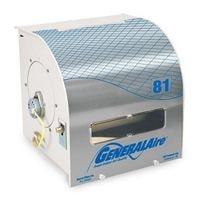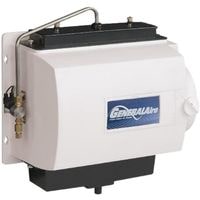General Humidifier Troubleshooting. Humidifiers are very important during the cold winter months because they help keep your skin hydrated and also make breathing easier when there is dryness in the air.
We’d like to stop you right there and tell you that there’s the hope of repairing a humidifier even if you face slight complications while doing so.
Though these appliances aren’t infallible and may break down eventually, we urge you to give us a call for assistance regarding humidifier repair work and save time and money.
General Humidifier Troubleshooting
Here we will discuss some problems with general humidifiers and how to troubleshoot them.
General Humidifier Has Overflowed
Water inlet valves are normally cut off by the humidistat when the relative humidity in the environment reaches a certain level.
If this does not happen and water continues to flow through the inlet valve once it is turned off or bypassed via the humidistat, either the switch or, more likely, the valve itself may be defective and need to be replaced.
To determine if power to your humidifier is interrupted from its source or from a wiring problem, first check that all of your appliance components are wired properly.
The float valve cannot be closed properly when the reservoir is too full, causing it to overflow. If water from a reservoir is flowing consistently and you notice that your float valve is sticking, remove this part and inspect it thoroughly before reinstalling.
General Humidifier Fan Will Not Work
General Humidifier Drum Will Not Turn

The drive belt might have broken or stretched out too much. If the motor is still working and the drive belt is in place but seems to be slipping, replace the drive belt.
If the drive belt is broken it will have to be replaced. A broken drive belt usually does not indicate any other problem and tends to dry out over time, this withstanding if it’s loose or worn it will need to be replaced.
The drive motor may need to be replaced if your humidifier drum does not spin, or stops every few moments.
If this seems to happen over a period of time, there may be other issues involved, and replacing only the motor may be a temporary fix.
Before replacing the motor, check to see if it is receiving power from the humidistat, and test using an ohmmeter on the wiring for any shorts or cuts. If everything checks out, consider purchasing a new drive motor.
General Humidifier Won’t Get Water
If the humidistat is improperly set, or it doesn’t work properly, the humidifier won’t fill with water.
To determine if this is the case, set the humidistat to its highest setting, and listen for a “click.” If you hear a click, but it still says there’s low humidity when you know high humidity is present, then the problem likely lies in the contacts inside of the unit.
If you don’t hear a click, then either the timer on your humidistat isn’t working properly or there’s some other problem within your system.
The saddle valve is a small brass water supply valve that occasionally gets clogged with sediment or calcium deposits.
Pressurized water flow can splash sediment and other foreign materials into the passageway of the valve, which eventually fills up over time.
It’s often difficult to clean a saddle valve thoroughly and so we recommend replacing it if it’s restricted.
Related Guides
